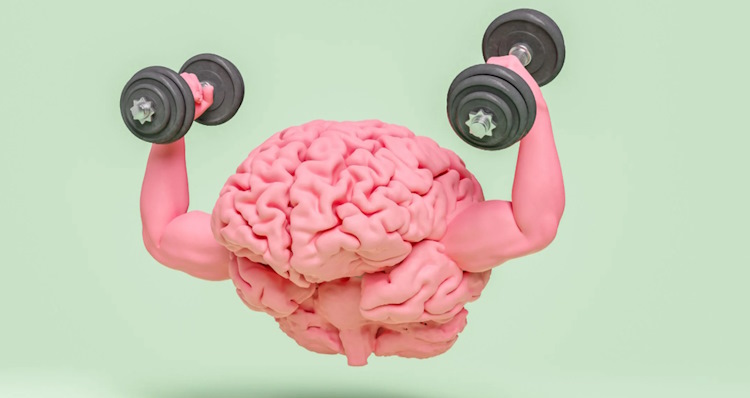The impact of intermittent fasting on fitness: benefits, risks, and strategies
“The Science Behind Intermittent Fasting and Fitness”
Let’s explore the research behind the benefits of intermittent fasting on fitness, including improved insulin sensitivity, reduced inflammation, and increased fat burning. What are the potential risks associated with fasting, and how to safely incorporate fasting into a fitness routine?
Intermittent fasting (IF) has been a hot topic in the fitness world for a while now, with some experts hailing it as the ultimate solution for weight loss and overall health. But what does the science say? Let’s dive in and explore the research behind IF and fitness.
First off, let’s talk about insulin sensitivity. Insulin is a hormone that regulates blood sugar levels, and when you have poor insulin sensitivity, your body struggles to process carbohydrates efficiently. This can lead to weight gain and even type 2 diabetes. But studies have shown that IF can improve insulin sensitivity, leading to better blood sugar regulation and potentially reducing the risk of developing these conditions.
But that’s not all – IF has also been shown to reduce inflammation in the body, which is a key factor in many chronic diseases. One study found that IF decreased levels of inflammatory markers in the blood, potentially reducing the risk of conditions like heart disease and cancer.
And of course, we can’t forget about fat burning. IF has been shown to increase the body’s ability to burn fat for fuel, which can be a game-changer for weight loss and overall body composition. Plus, fasting can increase the body’s levels of human growth hormone (HGH), which can help build and maintain lean muscle mass.
But before you dive headfirst into an IF routine, it’s important to note that there are potential risks associated with fasting. Some people may experience headaches, fatigue, or other unpleasant side effects, especially when starting out. Plus, IF may not be suitable for everyone, such as those with certain medical conditions or women who are pregnant or breastfeeding.
That being said, when done safely and with proper guidance, IF can be a powerful tool for improving fitness and overall health. So, if you’re interested in giving it a try, start by consulting with a healthcare professional and easing into it gradually. The research is promising, and who knows – intermittent fasting could be the missing piece in your fitness puzzle.
“Intermittent Fasting and Athletic Performance”
In this chapter, we will delve into the impact of intermittent fasting on athletic performance, including endurance, strength, and recovery. We will also examine the role of macronutrients in supporting athletic performance during fasting periods.
Athletic performance is a key focus for many athletes and fitness enthusiasts, and there is growing interest in the potential benefits of intermittent fasting (IF) on this aspect of fitness. In this chapter, we will explore the research behind IF and athletic performance, including improvements in endurance, strength, and recovery.
Let’s start with endurance. One study found that IF can increase endurance performance by up to 20%. This is likely due to the increased fat burning and improved insulin sensitivity that comes with fasting, as well as an increase in HGH levels. Another study found that IF improved VO2 max, a key marker of cardiovascular fitness.
But what about strength? Many athletes worry that fasting may lead to muscle loss or decreased strength gains. However, research suggests that this is not the case. In fact, IF has been shown to increase levels of HGH, which can help build and maintain lean muscle mass. Plus, fasting can also increase levels of testosterone, another hormone that is important for muscle growth and strength gains.
And when it comes to recovery, IF may be just what the doctor ordered. One study found that IF can improve muscle recovery after intense exercise, potentially reducing soreness and improving overall performance. Plus, the anti-inflammatory effects of IF can help reduce inflammation and promote faster healing.
Of course, as with any dietary change, it’s important to approach IF with caution and make sure you’re still meeting your nutritional needs. Fasting for too long or too frequently can lead to nutrient deficiencies and other health problems. But when done safely and with proper guidance, IF can be a powerful tool for improving athletic performance and taking your fitness to the next level.
“Intermittent Fasting and Body Composition”
This chapter will explore the relationship between intermittent fasting and body composition, including fat loss, muscle gain, and overall body composition changes. We will also discuss the importance of proper nutrition and exercise during fasting periods for optimal body composition changes.
Let’s face it, we all want to look our best and feel confident in our own skin. That’s why body composition is such an important aspect of fitness. And when it comes to body composition changes, intermittent fasting (IF) has been making waves in the fitness world.
One of the most exciting benefits of IF for body composition is its ability to promote fat loss. One study found that IF can lead to significant reductions in body fat, even in the absence of calorie restriction. This is likely due to the increased fat burning that occurs during fasting periods, as well as improvements in insulin sensitivity.
But what about muscle gain? Many people worry that fasting will lead to muscle loss, but research suggests that this isn’t the case. In fact, IF may actually help promote muscle gain by increasing levels of human growth hormone (HGH), which is important for building and maintaining lean muscle mass.
Of course, proper nutrition and exercise are key factors in achieving optimal body composition changes with IF. It’s important to make sure you’re getting enough protein and other nutrients to support muscle growth and repair, and to incorporate strength training exercises to build and maintain muscle mass.
And let’s not forget about the other benefits of IF for body composition. Research has shown that IF can improve overall body composition by reducing inflammation, improving metabolic function, and even promoting longevity.
So, if you’re looking to improve your body composition and achieve your fitness goals, IF may be worth considering. Just be sure to approach it with caution, and to consult with a healthcare professional before making any major dietary changes.
Basically, science suggests that intermittent fasting can have a significant impact on body composition, including fat loss, muscle gain, and overall improvements in body composition. With proper nutrition, exercise, and guidance, IF can be a powerful tool for achieving the body you’ve always wanted.
“Strategies for Incorporating Intermittent Fasting into a Fitness Routine”
In the final chapter, we will provide practical tips and strategies for incorporating intermittent fasting into a fitness routine. This will include meal planning, workout timing, and supplementation recommendations to support fasting periods. We will also discuss common challenges and how to overcome them when starting an intermittent fasting routine.
The first step in incorporating intermittent fasting into your fitness routine is to determine which fasting protocol works best for you. There are several different types of intermittent fasting, including the 16/8 method, the 5:2 diet, and alternate-day fasting. Each protocol has its own unique benefits and challenges, so it’s essential to find the one that works best for your lifestyle.
Once you’ve settled on a fasting protocol, the next step is to plan your meals and workouts accordingly. For example, if you’re following the 16/8 method, you might schedule your workouts for the morning, so you can break your fast with a post-workout meal. Alternatively, if you’re following the 5:2 diet, you might choose to fast on days when you’re not working out, so you can fuel your workouts with plenty of carbs.
Another important aspect of incorporating intermittent fasting into your fitness routine is to make sure you’re getting enough nutrients during your eating window. This may require some planning and supplementation, especially if you’re following a restrictive fasting protocol. For example, you may need to supplement with protein powder or amino acids to ensure that you’re getting enough protein to support muscle growth and recovery.
One common challenge of intermittent fasting is dealing with hunger and cravings. To overcome this, it’s essential to make sure that you’re eating enough during your eating window and that you’re choosing nutrient-dense foods that will keep you feeling full and satisfied. You can also try drinking plenty of water, chewing gum, or drinking black coffee or tea to help curb your appetite.
In conclusion, it’s important to be patient and give yourself time to adjust to intermittent fasting. Like any lifestyle change, it can take a while to get used to, and you may experience some side effects like headaches, fatigue or mood swings. However, with persistence and a solid plan in place, intermittent fasting can be a powerful tool for improving your fitness and overall health.









